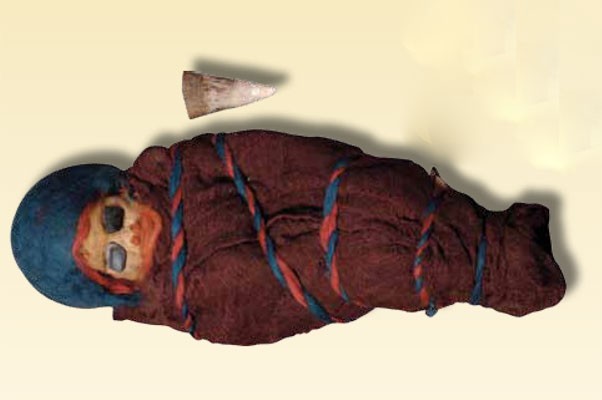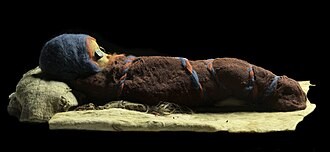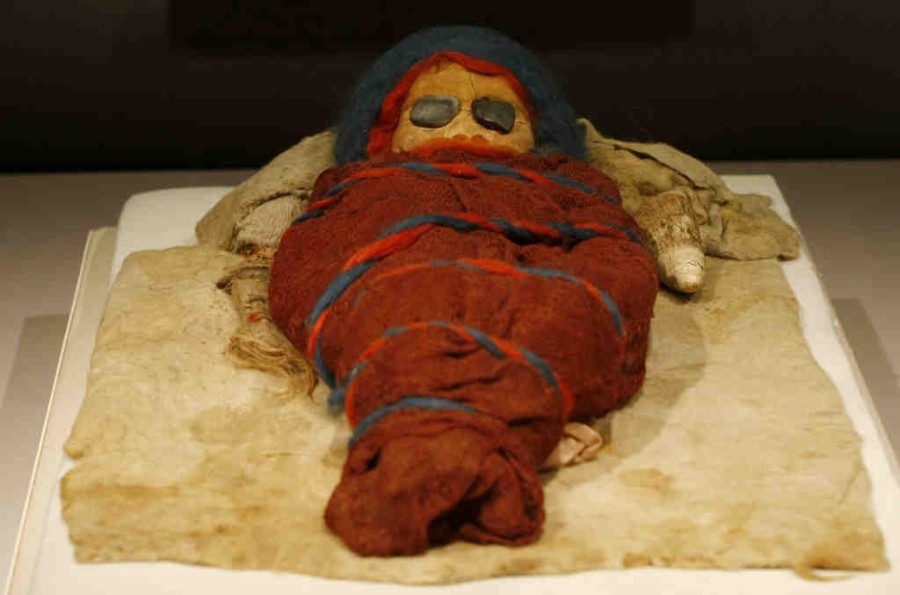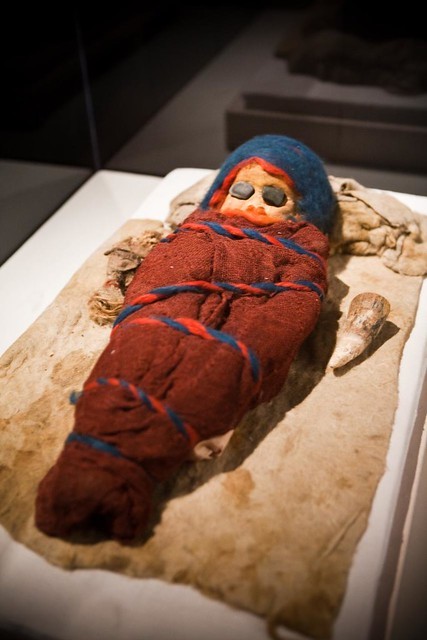This infant died when he or she was less than a year old. Dark blue stones covered its eyes, and red woolen yarn was inserted into its nostrils. The infant was buried with a cow horn tip and a bottle made from a sheep’s udder…

This well-preserved infant mummy, was discovered in the cemetery of the Qizilchoqa settlement about 60 km west of Qumul (Hami), an important, old Silk Road town in the far eastern portion of the region. It was dated to ca. 1200 BC…

More info in the “Ancient mummies of the Tarim Basin” and “The mummies of East Central Asia”
It is one of hundreds of Bronze and Iron Age caucasian (European) mummies discovered in deserts along the Silk Road in Central Asia and Northern China…
Now, these are ceramic decorated horns found in infant graves of the Central European Bronze Age Encrusted Pottery culture (2000-1500BC).

I talked about them in my post “Baby milk horns”…
Why were these horns placed in infant graves? To provide them with drink in the otherworld…How do we know this?
We know this because Encrusted Pottery culture people buried their dead with age appropriate “grave goods”: big ceramic pots for adults, small ceramic pots for children and ceramic horns for babies…

I talked about this in my post “One for the road”…
And because of the ancient belief that the otherworld is “a thirsty place”…And because in Central Europe, making sure the dead have enough water in the otherworld is still seen as an imperative… I talked about this in my post “Thirst”…
Have you ever thought about how did our ancestors arrive to the idea that the otherworld was a thirsty place? Or maybe it is better to ask where and when did our ancestors arrive at the idea that the otherworld was a thirsty place?
I am thinking…